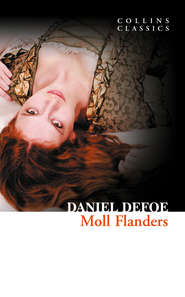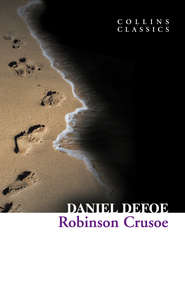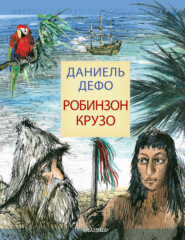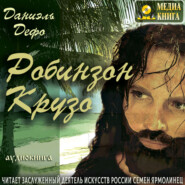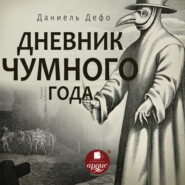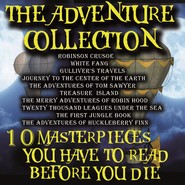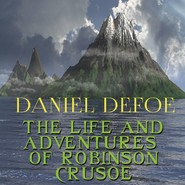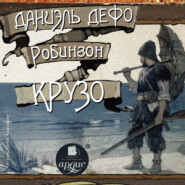По всем вопросам обращайтесь на: info@litportal.ru
(©) 2003-2024.
✖
Defoe on Sheppard and Wild: The True and Genuine Account of the Life and Actions of the Late Jonathan Wild by Daniel Defoe
Настройки чтения
Размер шрифта
Высота строк
Поля
Defoe’s interest in Newgate, and the whole question of criminal lives, was longstanding. He had himself been imprisoned there, in the Newgate Press Yard, for libel in 1703. More recently, in 1718, while researching and writing Robinson Crusoe, he had become involved with the case of James Shepheard (no relation), an eighteen-year-old Newgate prisoner who, for political reasons, had been denied the right to publish his ‘True Confession’ before execution. Defoe took this up in two pamphlets (notably a Vindication of the Press), as raising the issue of free speech.
In 1721 both Defoe’s editor Nathaniel Mist, and his own son Benjamin, were briefly imprisoned in Newgate for seditious libel. While visiting them there, Defoe heard the stories of two famous Newgate women prisoners, Moll King and ‘Callicoe’ Sarah, and probably interviewed one of them. These biographical materials became the factual basis for the Defoe’s vivid novel, The Fortunes and Misfortunes of the famous Moll Flanders. This was also significant because Defoe chose to tell it in a woman’s voice, using the convention of the ‘True Confession’ of Newgate.
4
The success of Moll Flanders coincided with a virtual crimewave in London. To combat it, the so-called Black Act was passed in 1723, increasing the number of capital punishment offences to more than 200. These were mostly against property, including the theft of a silver spoon from a private house, or a shilling’s worth of lace from a shop. Earlier legislation had made the receiving of stolen property a capital offence, and also introduced the law of ‘impeachment’ by which anyone accused of a crime could turn King’s Evidence, thereby earning not only a complete pardon but also a £40 reward. All these measures were aimed at breaking up criminal gangs, and all of them placed tremendous power in the hands of Jonathan Wild, who, in the absence of a regular police force or criminal investigation department, could manipulate them to his own ends.
So when Defoe’s editor John Applebee began to run news stories in the Weekly Journal about Sheppard in 1724 - no less than sixteen pieces between August and November - Defoe’s interest was quickly aroused. Though two of these pieces were amorous letters signed by ‘Moll Flander’s niece, Betty Blueskins’, it is unlikely that any of these preliminary articles, largely facetious in tone, were by Defoe himself (though it is possible), but he cannot have ignored the developing Newgate drama.
As a publisher of crime stories, Applebee had established special access to the Newgate Condemned Hold. He had a virtual monopoly in publishing the ‘True Confessions’ of condemned prisoners, taken down by the Newgate ‘Ordinary’ or one of his assistant chaplains, who were traditionally granted this right by the Newgate Keeper. The chaplains could expect to earn £25 for a particularly sensational one. Both Moll Flanders and Jack Sheppard himself complained bitterly of cynical chaplains earning this blood money. But Applebee transformed this situation by starting to employ his own anonymous journalists (‘Mr Applebee’s garreteers’) as biographers, and by paying a small fee to the prisoners themselves, or making an allowance to their family. Thus many condemned men, including Sheppard, took pride and even comfort in the publication of their life stories.
These ‘Confessions’ achieved immense popularity by the 1720s, and can now be seen as the foundation of a wholly new tradition of secular biography in English literature, a generation before Johnson, Boswell and Malone. By 1760, the short Lives of some 58 female and 1,129 male Newgate prisoners had been published. Of these, 237 separately published Accounts have survived as 2d. broad sheets, 6d. pamphlets, or 1S bound collections. About half were taken down by the Newgate chaplains, and the rest by journalists employed by Applebee and other Fleet Street printers like Robert Walker. Sometimes these sources were combined by the editor, or written up as a more finished biography by a professional author.
So an advertisement in Applebee’s Journal running for four days immediately after his third recapture, from 13 to 16 September 1724, purporting to come from Sheppard, announced: ‘The Time of my Dissolution approaching … I have therefore for the satisfaction of the World, communicated my whole Life and wicked Actions to the Reverend Mr Wagstaff.’ In fact, this unlikely expression of repentance signaled a commercial deal with Applebee. Similarly, in a published letter from Sheppard to his mother, Jack stated that Applebee was paying him a retainer of eight pence a day ‘during Life’ for the exclusive right to all his personal ‘Memorandums’. In the letter, Jack wittily transferred this retainer to his mother, if he should not be ‘available’ in Newgate for any period to collect in person. Indeed he was unavailable for part of October.
5
The first of the two anonymous pamphlets that Applebee published, The History of John Sheppard, conforms in many respects to the early Newgate type. It mixes sensational facts about the crimes, with pious exhortations, and the occasional crude or heavily facetious aside about his repeated escapes: ‘So Jack returned like a dog to his Vomit.’
Yet it is a strangely gripping work in places, fast-moving, circumstantial and vividly evocative:
Having got clear of his prison, he took coach, disguised in a night gown, at the corner of the Old Bailey, along with a man who waited for him in the street (supposed to be Page the butcher), ordering the coachman to drive to Blackfriars Stairs, where his prostitute gave him the meeting, and they three took boat and went ashore at the Horse-Ferry at Westminster, and at the White Hart they went in, drank, and stayed some time, thence… by the help of a saw, he quitted the chains he had brought with him from Newgate, and then like a free man took his ramble through the City and came to Spitalfields, and there lay with Edgworth Bess.
But much of it is written so naively, and in such a ragbag of different styles, that it would be difficult to assign the whole text to the mature Defoe, unless as a parody. Equally, although clearly based in part on interviews with Sheppard, one also hesitates to hand it over entire to the Reverend Wagstaff, as advertised, for it is far too subversive for a chaplain to condone.
In fact The History has the obvious feel of one of John Applebee’s corporate productions: the work of several pens, flung together and rushed into print by the publisher, as news of Sheppard’s fourth and most famous escape broke in October. It is clear that Sheppard has not been recaptured by Wild at the time of publication, and the humorously fictionalised letter from Sheppard with which it ends (‘Five Hours after His Escape’ - a mass of bad puns) was one of Applebee’s own favourite journalistic devices.
The heterogeneous character of the pamphlet is obvious. There are passages that are evidently straight extracts from official court documents. There are fascinating but confused accounts of Sheppard’s escape methods, which sound like an Applebee ‘garreteer’ interviewing the prison turnkeys: ‘the only answer that is given to the whole at Newgate is, that the Devil came in person and assisted him.’ Equally, there are insertions of religious homily and contrition which surely emanate from the well-meaning Reverend Wagstaff.
Yet throughout the pamphlet there are brilliant, linking passages of narration which have all the stamp of Defoe. The section that begins with the vivid, unforgettable description of the London crowd ecstatically celebrating Sheppard’s first escape from the Newgate Condemned Hold in August has his touch: ‘His escape and his being so suddenly retaken made such a noise in the Town, that it was thought all the common people would have gone Mad about him, there being not a Porter to be had for love nor money, nor getting into an alehouse, for butchers, shoemakers, and barbers, all engaged in Controversies and Wagers about Sheppard …’
Then there are the collections of Sheppard’s impious jokes and irrepressible witticisms, amidst all the horror and filth of Newgate, which so well reveal his stoic character and natural bravado. This growing interest in the personality of the criminal is new. Again, in these one may detect the sympathetic ear of the author of Moll Flanders. They include the sarcastic aside that all the Newgate chaplains were ‘Gingerbread men’ intent on making money from him, ‘to form papers and ballads out of his behaviour’; and the splendid blasphemy: ‘Yes, Sir, I am The Sheppard, and all the jailors in the town are my Flock, and I cannot stir into the country but they are all at my heels baaughing after me.’ They also include Sheppard’s vicious joke to the pretty girl who did his washing in Newgate, who arrived one day with ‘her eyes beaten black and blue’. It is difficult to believe that the Reverend Wagstaff would have recorded any of these.
Indeed, one may wonder if Sheppard himself really said them all; or if Defoe invented, or at least polished, some of them for him? One famous exclamation of his became proverbial all over London. ‘One file’s worth all the Bibles in the world!’. However it is not merely quoted in The History, but subtly dramatised as part of an angry confrontation with the Reverend Wagstaff. It would have taken a shrewd onlooker - a novelist or biographer - to catch this moment.
When he was visited in the Castle by the Reverend Mr Wagstaff, he put on the face only of a preparation for his end … and when he has been pressed to discover those who put him upon means of escaping, and furnished him with implements, he would passionately, and with a motion of striking, say: ‘Ask me no such questions; one file’s worth all the Bibles in the world!’.
So much of Sheppard - his defiance, his youthful courage, his unpredictability - is caught not merely in that phrase, but in that passionate ‘motion of striking’.
6
The outstanding feature of the second pamphlet, A Narrative of John Sheppard, is its confident and brilliant assumption of Sheppard’s own voice, just as Defoe had previously assumed Moll Flanders’ in the novel. So this second biography is presented in the first person, in the convention of a ‘True Confession’, and its tone is wonderfully controlled by Defoe throughout: plain speaking, disarmingly frank, occasionally ironic, but always believable. From the outset the narrator continually ‘corrects’ the first pamphlet, so a sense of intimacy and confidentiality is achieved. ‘Sheppard’ adds convincing new details about his Spitalfields childhood, his relationship with his mother and brother Thomas, and his evidently stormy affair with Elizabeth Lyon (‘Edgworth Bess’).
This interest in the subject’s youth and upbringing, as emotionally formative, is a clear mark of the new biography. We learn for example how Sheppard’s mother tried to cover up for his early crimes (just as she later begged him - in vain - to leave London); how he felt angry with his guardian Mr Kneebone (who had tried to replace his dead father); and how his first arrest was not for theft, but for breaking his indentures as an apprentice carpenter. His subsequent humiliating night in St Clement’s Roundhouse was the one recorded time he did not try to escape: but it left Sheppard ungovernable at eighteen. ‘I then fell to robbing almost everyone that stood in my way.’ Significantly one of his first major burglaries was from his own guardian, ‘my kind patron and benefactor’ Mr Kneebone.
Altogether it is a formidable bit of literary ventriloquism, and as always with Defoe, supremely ambiguous. Is Sheppard vain or penitent? Gentle or psychopathically violent? Loyal (to Elizabeth Lyon, for example) or cruelly treacherous? Defoe makes us continually hang upon his words in order to interpret character, and to judge actions. This is a quite different order of narrative from the traditional Newgate life, and again a fundamental drive towards the new, realistic biography.
Another thing that the biography shows, is that Sheppard’s fantastic abilities as escaper were no mystery. They came from his outstanding skills as a carpenter and builder, learned during his six year apprenticeship, but also inherited from his father and his grandfather (both carpenters). His great physical strength combined with a small gymnastic body, gave him a natural mastery of building materials and an instinctive understanding of the construction (and deconstruction) of every kind of lock, wall, window, bar, spike, chimney-breast, floor, ceiling, roof or cellar. He once cheekily complimented the Keeper of Newgate on the high quality of the prison’s ironwork, having just ‘worked’ one of its most formidable spikes.
The climax of the second pamphlet is Defoe’s extraordinarily tense and revealing narrative of Sheppard’s last escape from Newgate. This is quite as striking as Casanova’s celebrated account of his escape from the Venetian prison, a generation later in his Memoirs. The author of Robinson Crusoe was always fascinated by technique, expertise and method: how things actually get done. With astonishing ingenuity, Sheppard escaped upwards: first through a chimney, then through six massively bolted doors, then through the prison chapel, and finally out over the Newgate rooftops. Like a good editor, Applebee immediately saw the attraction of this grim obstacle-course for readers, and took the unusual step of commissioning a copper-plate engraving, showing the eight stages of Sheppard’s escape, which became a huge selling point.
This escape sequence, which took place entirely in the dark over nine hours, is finally turned by Defoe into a study of Sheppard’s character under stress. ‘It being full dark, my spirits began to fail me, as greatly doubting of succeeding; but cheering up, I wrought on with great diligence, and in less than half an hour … wrenched the box off, and so made the door my humble servant.’
While at liberty, Sheppard disguised himself and wandered through London, hearing stories and ballads about his own exploits. According to Defoe, this enlarged his whole sense of identity. ‘That night I came to a cellar at Charing Cross, and refreshed myself very comfortably with Roast Veal etc, and heard about a dozen people all discoursing about Sheppard, and nothing else was talked about while a stayed amongst them.’ The next day he talked with a young woman in an alehouse off Piccadilly, who spoke admiringly of Sheppard and ‘wished a Curse might fall on any who should betray him.’
After his last escape, he stole a set of gentleman’s clothes, rings and sword, picked up two pretty girls (one described as his true ‘Sweetheart’, though neither being Elizabeth Lyon), and had the wonderful audacity to hire a coach and ride back under the very gateway of the Newgate Prison arch. This, as told by Defoe, was a stroke of theatrical genius and an ultimate escape into another identity, ‘transformed into a Perfect Gentleman’, as Sheppard exults just a few hours before his final re-capture. His last free act is to buy his mother three-quarters of a pint of best brandy.
7
Where Sheppard is presented as an ambiguous hero, Defoe presents his adversary Jonathan Wild as an unambiguous villain: ‘this famous, or if you please, infamous creature’. The third, and by far the longest biographical pamphlet, The True and Genuine Account of the Late Jonathan Wild (1725), is immediately distinguished by Defoe’s severity of tone. He now wholly rejects the Newgate style of ‘mockery and ridicule’, and emphasises the moral value of strict biographical truth. ‘They that had rather have a Falsehood to laugh at than a True Account of things to inform them, had best buy the Fiction, and leave the History to those who know how to distinguish Good from Evil.’
Although no voice that Defoe adopts can ever be taken as reliably his own, here he does seem to speak out in his own person: the sixty-year-old citizen of London, the family man, the experienced writer, the unflinching and undeluded judge of human character. With Jonathan Wild there is little attempt at sympathetic ventriloquism. The biographical narrative has a cool, sardonic and almost forensic style: he writes of Wild as a ‘cunning artist’ perpetrating ‘exquisite villainies’. The story is cast largely in the third person - except for one notably section of dramatized dialogue in the second half.
Defoe’s analysis of Wild is unsparing from the start. ‘Take him as a man only, he had a kind of brutal Courage which fitted him to be an Instrument in attacking some of the most desperate of the several Gangs of Rogues he had to do with. But as this Courage also served to make him audacious in the other Wicked Things he undertook, he was rather Bold than Courageous, and might be called impudent …’
Much of the first half of the Life is spent on carefully analysing Wild’s brilliant methods of fencing stolen property and controlling the gangs all over London (‘the fraternity of thieves’) through the dual pressures of terror and greed. Much ironic play is made with the idea of his ‘dexterity’ and his ‘honesty’. While blackmailing, betraying and racketeering, Wild always appeared to remain just within the letter of the law. ‘It must be allowed to Jonathan’s fame, that as he steered among rocks and shoals, so he was a bold pilot; he ventured in and always got out in a manner equally surprising; no man ever did the like before him …’
As always, Defoe is fascinated by this technical expertise. If Sheppard’s genius was for dismantling things and escaping; Wild’s was for organising human beings and incarcerating them, either physically or psychologically. As with Sheppard, Defoe examines the emotional background to this criminal career. Unlike Sheppard, Wild was a provincial boy from Wolverhampton, ambitious, controlling, and obsessionally meticulous in his habits - ‘he kept his counting house or office, like a man of business, and had his books to enter everything in with the utmost exactness and regularity’. He was always domineering and manipulative. When first arrested for debt, he quickly became a trusty, ‘got so much favour with the Keepers that he got the Liberty of the Gate, as they call it’, and was soon running errands outside for the other prisoners, ‘to get a penny’. This became his first racket, which soon involved a prostitute, Mary Milliner, who taught him ‘a great many new ways of getting money’.
Defoe is interested by the story of Wild’s six wives, names and identifies each one, and finds surprisingly that most were respectable (one a very religious minded and ‘sober’ Roman Catholic), and all were apparently devoted to him. Indeed his last wife, Mary Dean, twice tried to commit suicide when Wild was sentenced to death.
Wild’s power over women is further illustrated by a remarkable sequence of dialogue, in which Defoe shows Wild in his office smoothly bamboozling a respectable lady client over the return of a stolen gold watch. Wild’s sinister courtesy to his client (‘a pot of tea brought out in form’) is offset by his terrifying secret hold over the thief involved - also a woman, and none other (according to Defoe) that Moll King herself. Here the world of Defoe’s Newgate fiction and his Newgate biography virtually meet, and can be taken as his own signature to the work. It is an interesting possibility that this sequence was based on one of his own daughters’ encounter with Wild.
Defoe makes only passing mention of Wild’s pursuit of Sheppard, although in the previous pamphlet he has Sheppard making the first published accusations against Wild’s corruption. But he does end with a bitter accusation against Wild’s exploiting ‘the young generation of thieves’, and worst of all crimes, corrupting the poor children of London. ‘He practised principally upon young creatures and little destitute children, such as seemed to be left to wander about in want and beggary; and many a poor boy he has picked up in the street pretending charity … which, when it has come to the issue, has been no more or less than to breed them up to thieving, and to ripen them for the devil.’ As with Fagin in Charles Dickens’s Oliver Twist, there is even a hint here of sexual exploitation.
In the end, Defoe’s biography grants Jonathan Wild very little mercy. Where he is often indulgent towards Sheppard, even romantic, he regards Wild’s life as ‘a tragedy’ for all those around him, and a grotesque one at that. Their different manners of death on the Tyburn scaffold - Sheppard cool, chippy and resolute, Wild opium fuddled and vomiting - seal this contrast. But in both cases the new, nascent form of biography takes them seriously, simply as human beings. This is itself is a literary revolution. Though they are both in their way small, disreputable figures, without social standing or money or education or permanent power, they are presented as vivid individual spirits, complex personalities. They are worthy of remembrance, and of understanding, whether as good or evil.
8
It is perhaps characteristic that the aging Defoe thoroughly disapproved of the legends that quickly crystallized around Sheppard and Wild, even though as their biographer he was largely responsible for them. The myth-making began rapidly, and within months a pantomime Harlequin Sheppard was mounted on the stalls at Bartholomew’s Fair, in nearby Smithfield Market. This was followed in 1728 by John Gay’s The Beggars’ Opera, a ‘Newgate pastoral’ with Wild transformed into the crooked jailer Peachum and Sheppard into the glamorous robber MacHeath.
Gay also picked up Defoe’s hint about the two pretty girls in the coach (Sheppard’s final trade-in for Elizabeth Lyon, perhaps), and invented Polly Peachum and Lucy Lockit as rivals for MacHeath’s affections. Defoe’s wonderful feel for the London streets and the crowds, an essential part of his biographies, was also reflected in the use of English folk-songs and street-cries for the music, such as the haunting lyric, ‘Over the hills and faraway’.
Many other spin-offs followed after Defoe’s own death in 1731. They included Henry Fielding’s satirical novel, Jonathan Wild the Great (1743), and the numerous composite biographies published throughout the later eighteenth century in various editions of The Newgate Calendar. By the nineteenth century the Sheppard and Wild saga had taken on a life of its own, flamboyantly revived in Harrison Ainsworth’s bestselling novel, Jack Sheppard (1839), obliquely reflected in Dickens, and vividly embroidered in many Victorian music hall pieces. Here Jack was often played - provokingly - by an actress in tight silk britches, festooned with decorative fetters and chains. The myth also migrated abroad, attaching itself to newspaper stories of the outlaws Ned Kelly in Australia, and Jesse James in America, and re-surfacing in the twentieth century with Brecht’s Threepenny Opera in Germany.
Besides providing the material for so much fiction and music, there was also an interesting visual tradition, attaching particularly to Sheppard. Hogarth’s great sequence of satirical pictures, The Idle Apprentice, was partly inspired by his story. While Applebee’s superb anonymous copperplate illustration of the last escape, was later picked up by Cruickshank in a series of fine, spidery engravings for Ainsworth’s novel. These were set out in action-sequence, and may claim to be one of very the earliest strip-cartoons or bandes-dessinées. The archetypal shadow of the Sheppard and Wild confrontation may also be faintly traced in innumerable modern escape films, not least perhaps in The Great Escape (1963) and Papillon (1973), both featuring the rangy, laconic actor Steve McQueen, whose round, pale-eyed, boyish face bears an odd resemblance to Thornhill’s original portrait of Sheppard in Newgate.
This suggests another feature to the new form of non-fiction that Defoe was helping to create. On the one hand, biography showed itself to be a young aggressive genre, with a growing popular readership, and a natural tendency to consume and absorb older and more primitive literary forms - folk tales, ballads, journalism, trial transcripts, ‘True Confessions’, pious sermons - by gradually insisting on greater human depth, greater historical accuracy and authenticity. On the other hand, it was also a generous, disreputable and uninhibited form, freely and perhaps wantonly providing material about the human condition - often intimate, scandalous or confidential - for further imaginative expansion: in novels, theatre, opera, painting, illustration, and ultimately film.
So from these early beginnings, still uncertain of its origins or authority, still of doubtful or anonymous authorship, but with the presiding restless genius of Daniel Defoe, biography itself was set free to tell a new kind of human story.
THE HISTORY OF THE REMARKABLE LIFE OF JOHN SHEPPARD (#ulink_e7f433c2-7a67-5d9a-bad8-8802d9571e87)
Containing
A Particular Account of his Many
ROBBERIES and ESCAPES,








